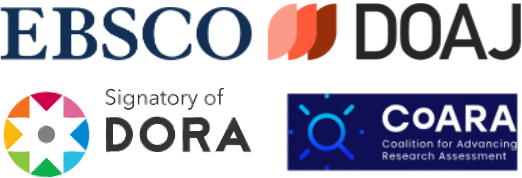Investigation of tourism demand and country-brand value correlations
Statistical analysis of the impact of visits
DOI:
https://doi.org/10.14267/VEZTUD.2025.02.04Keywords:
sustainability, travel and tourism, country image, global competitiveness indicatorAbstract
This study explores how tourism data correlates with a country’s brand value, analyzing public databases with statistical methods. The country brand reflects foreign perception, acceptance, and esteem, often impacting tourism. While popular brand indexes assess tourism perception, they typically exclude actual tourist arrival numbers. Previous research suggests that a higher brand value attracts more foreign visitors, but few have investigated if visitor numbers directly influence brand value. This study confirms a significant correlation and suggests a causal link between brand value and tourist arrivals, though some uncertainty remains. This initial study aims to test the feasibility of this question for future research.
Downloads
References
Aguinis, H., Ramani, R.S., & Cascio, W.F. (2020). Methodological practices in international business research: An after-action review of challenges and solutions. Journal of International Business Studies, 51(9), 1593– 1608. https://doi.org/10.1057/s41267-020-00353-7
Anholt, S. (2007). Competitive identity: The new brand management for nations, cities and regions. Palgrave Macmillan. https://doi.org/10.1057/9780230627727
Caliendo, M., & Kopeinig, S. (2008). Some practical guidance for the implementation of propensity score matching. Journal of Economic Surveys, 22(1), 31-72. https://doi.org/10.1111/j.1467-6419.2007.00527.x
Crouch, G.I., & Ritchie, J.R.B. (1999). Tourism, competitiveness, and societal prosperity. Journal of Business Research, 44(3), 137-152. https://doi.org/10.1016/S0148-2963(97)00196-3
Dinnie, K. (2022). Nation branding: Concepts, issues, practice (3rd. ed.). Routledge. https://doi.org/10.4324/9781003100249
Ghemawat, P. (2001). Distance still matters: The hard reality of global expansion. Harvard Business Review, 79(8), 137-147. https://faculty.washington.edu/pathaksd/BBUS549/Required%20Readings/Distance%20Still%20Matters.pdf
Hakala, U., Lemmetyinen, A., & Kantola, S. (2013). Country image as a nation‐branding tool. Marketing Intelligence & Planning, 31(5), 538–556. https://doi.org/10.1108/MIP-04-2013-0060
Hofstede, G. (2001). Culture’s consequences: Comparing values, behaviors, institutions, and organizations across nations (2nd ed.). Sage Publications.
Jaffe, E.D., & Nebenzahl, I.D. (2006). National image and competitive advantage: The theory and practice of place branding. Copenhagen Business School Press.
Jiménez, N., & San Martín, S. (2012). The Role of Country of Origin in the Purchase Intention of Products from Emerging Markets. In A.M. Gil-Lafuente, J. Gil- Lafuente, & J. M. Merigó-Lindahl (Eds.), Soft Computing in Management and Business Economics (pp. 381–396). Springer. https://doi.org/10.1007/978-3-642-30457-6_25
Kotler, P., & Gertner, D. (2002). Country as brand, product, and beyond: A place marketing and brand management perspective. Journal of Brand Management, 9(4), 249-261. https://doi.org/10.1057/palgrave.bm.2540076
Kotler, P., Haider, D.H., & Rein, I. (1993). Marketing places: Attracting investment, industry, and tourism to cities, states, and nations. Free Press. https://doi.org/10.1177/004728759403200383
Morgan, N., Pritchard, A., & Pride, R. (2011). Destination branding: Creating the unique destination proposition. Routledge.
Mossberg, L., & Kleppe, I. A. (2005). Country and Destination Image - Different or similar image concepts? The Service Industries Journal, 25(4), 493-503. https://doi.org/10.1080/02642060500092147
Papp-Váry, Á. (2021). Országmárka-rangsorok a Covid- 19 világjárvány idején – „Az az egy fontos: legyetek jók most!”. Tudásmenedzsment, 22(1), 225- 238. https://journals.lib.pte.hu/index.php/tm/article/view/5070/4906
Papp-Váry, Á. (2022a). Towards a sustainable country branding model = Egy fenntartható o rszágmárkázás- modell felé. In Resperger, R. (Eds.), Társadalom – Gazdaság – Természet: Szinergiák a fenntartható fejlődésben (pp. 30). University of Sopron Press. http://publicatio.uni-sopron.hu/2529/1/ProgramandAbstractBookletLKKConf.03.11.2022.pdf#page=30
Papp-Váry, Á. (2022b). Az országmárka rangsorokban történt változások a koronavírus-járvány idején. In Kovács, L., & Szőke, V. (Eds.), Két év új normalitás: A koronavírus-járvány (Covid19) gazdasági és társadalmi hatásai (pp. 189-204). Savaria University Press.
Papp-Váry, Á. (2022c). Országmárka-építés humorral: frenetikus fricskák, vicces visszavágások. Márkamonitor, 49-53. http://www.papp-vary.hu/orszagmarkazas/Orszagmarka_epites_humorral_Frenetikus_fricskak_vicces_visszavagasok.pdf
Papp-Váry, Á. (2022d). Mitől lesz jó egy ország megítélése? Országmárka-rangsorok a Covid-19 idején. In Tózsa, I. (Eds.), Településmarketing és Gazdaságföldrajzi Műhely: 2021. évi kutatások (Paper: 01.003). Neumann János Egyetem Gazdaságföldrajzi és Településmarketing Központ.
Papp-Váry, Á., & Porzsolt, P. (2024). Finnország márkaépítési törekvései és országmárka kézikönyvei mint jó gyakorlat. In Ferkelt, B., & Nagy, M. (Eds.), Európai egység: A Maastrichti szerződéstől a modern Unióig (pp. 267-279). Aposztróf Kiadó.
Pike, S. (2004). Destination marketing organizations: Bridging theory and practice. Routledge.
Rose, C., & Thomsen, S. (2004). The Impact of Corporate Reputation on Performance: Some Danish Evidence. European Management Journal, 22(2), 201–210. https://doi.org/10.1016/j.emj.2004.01.012
Rosenbaum, P.R., & Rubin, D.B. (1983). The central role of the propensity score in observational studies for causal effects. Biometrika, 70(1), 41-55. https://doi.org/10.2307/2335942
Rubin, D.B. (2005). Causal inference using potential outcomes. Journal of the American Statistical Association, 100(469), 322-331. https://doi.org/10.1198/016214504000001880
Szolnoki, Sz., & Papp-Váry, Á. (2022). Az „Alkotás és kreativitás földje” – az izraeli „ütésálló” országmárka kialakulása és válasza a koronavírus világjárványra. In Korcsmáros, E. (Eds.), 13th International Conference of J. Selye University. Economics Section. Conference Proceedings (pp. 335-352). Selye János Egyetem.

Downloads
Published
How to Cite
Issue
Section
License
Copyright (c) 2025 Corvinus University of Budapest, publisher of Vezetéstudomány / Budapest Management Review

This work is licensed under a Creative Commons Attribution 4.0 International License.
Authors assign copyright to Vezetéstudomány / Budapest Management Review. Authors are responsible for permission to reproduce copyright material from other sources.

